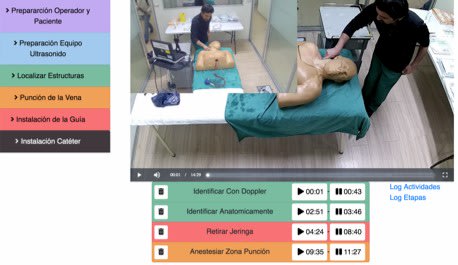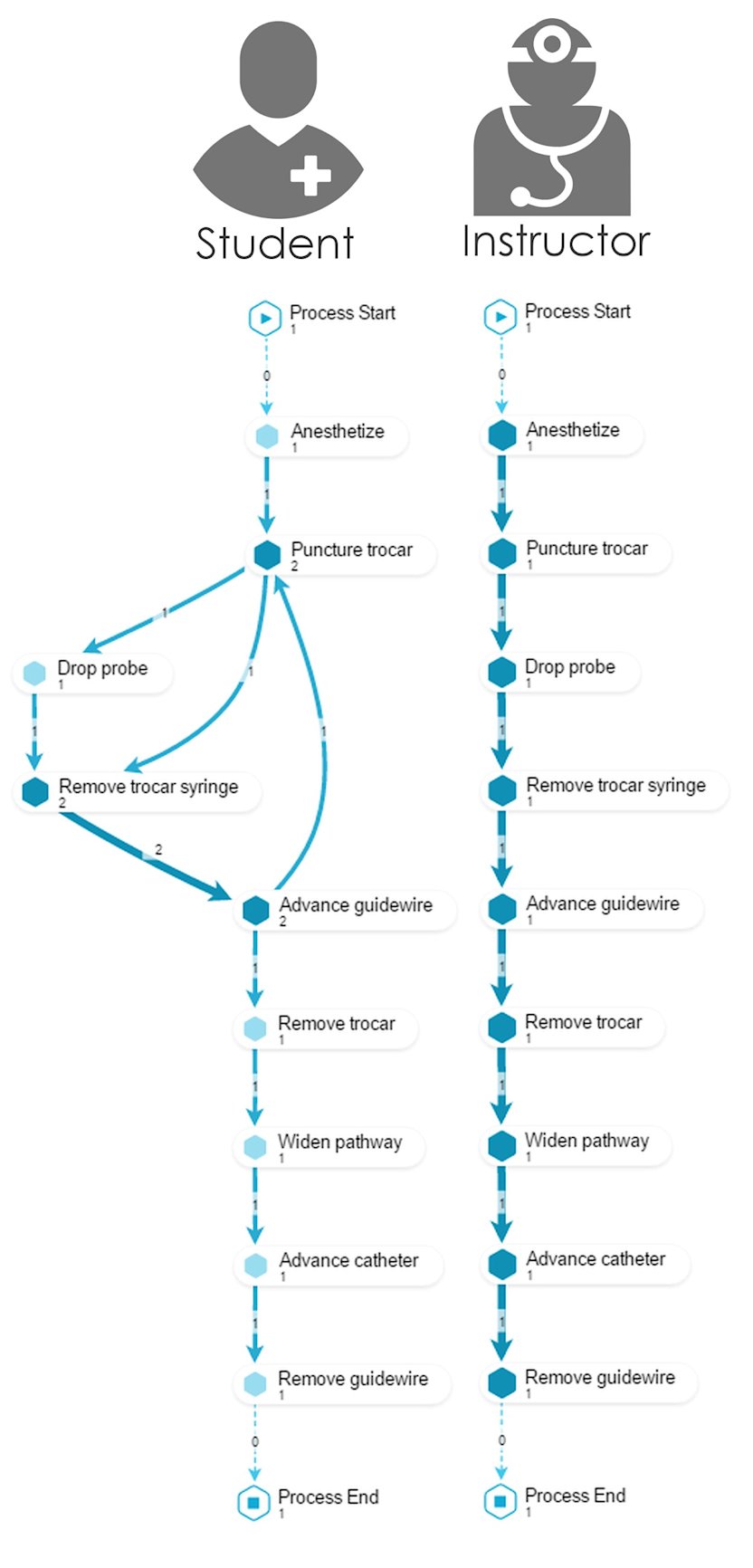
Can Process Mining Be Applied to Non-Conventional Processes?
The application of process mining technology to typical corporate processes such as purchase to pay, order to cash, logistics or customer service is well documented. And while these processes often represent the core of a corporation or other business organization’s operations, process mining has also proven beneficial in less conventional sectors such as construction, education, forestry and medicine.
Yet the chief benefits process mining provides come through its unbiased portrayal of process data—data pulled directly from operational systems, databases, spreadsheets, etc. So how can process mining provide the same valuable insights for manual procedures, like those performed in the medical field?
The Process-Oriented Medical Education Case
To explore the utility of process mining technology beyond everyday operations, we partnered with medical colleagues to create a research group. The focus of our group was process-oriented applications for medical education—specifically for surgical skill training. Our goals included:
• Providing a novel process-perspective to traditional medical training • Improving the learning during training • Reducing the high costs of training
For our pilot project we used process mining technology to help us uncover and analyze what occurred during training for the catheter venous central (CVC) installation surgical procedure. A CVC is used for direct transport of medicine, nutrients, blood products or fluids into the body. Unlike a regular IV catheter, the CVC can remain in a central vein in the body long-term, so installing it correctly is critical.
And Where is the Event Data?
As stated before, process mining projects rely on data. This project was no exception. Since the surgical procedure is a manual task, however, we needed to find a way to collect data about the task. Our solution? Record the students on video as they performed the procedure.
Strictly using video for evaluation, however, involves review of what is happening on the screen. To avoid negating the objective purpose of our data collection, we developed a special tool to mark the videos. Much like the components of event logs for corporate IT systems, these Process-Oriented Medical Education (POME) tags indicate what activities were performed, when they started and when they ended.

At the start of the project students took a test to benchmark their skillset. We analyzed those tests using process mining technology and provided the students with a procedural report.
They then practiced the procedure, taking into account the information from their preliminary exam. At the end of the project they took another test to certify they had acquired the necessary skills.
Lessons Learned
Why use process mining to evaluate training where observation and feedback have previously sufficed? For the same reasons process mining is used for business processes: to provide visible, objective results.
In our project, we used the technology to analyze the data and prepare reports that would be illuminating to both the students and their instructors. The exact path followed in each iteration of the procedure can be illustrated using the case animation feature available in some process mining solutions, like Celonis.

The figure above demonstrates some of our findings:
While executing the procedure, students had to perform rework during the venous puncture using the trocar.
During the second iteration of the trocar puncture, the probe was not properly dropped into the sterile zone. This would prevent the ability to make a third attempt without resterilizing all materials used in the procedure.
Some activities were performed out of order.
In some cases, there was excessive waiting times between tasks, indicating the student had doubts about the next action to perform.
Much like in use cases for corporate procedures (or even larger initiatives like automation), our findings highlighted opportunities to provide further clarification or additional training for maximum ongoing improvement.
The Process-Oriented Medical Education Revolution is Here to Stay
This exciting use of process mining technology to help improve medical procedure training is just the tip of the iceberg. Even now, we are continuing to explore the application of more advanced process mining techniques.
For example, as part of the Conformance Checking Challenge 2019*, we are using the conformance checking process mining capability to compare execution data with a normative model of the procedure requirements.
This use case shows that the only limit to process mining applicability is our imaginations. And in that way its potential for transformation extends far beyond a task or workflow evaluation. In any case, our research group and project have highlighted another key learning:
The process-oriented medical education revolution is here to stay.
Jorge is a member of the Celonis Academic Alliance - a global network of more than 150 teachers and researchers dedicated to process mining. The Academic Alliance enabled more than 10,000 students to analyze processes and turn insights into action via classroom courses and e-learning. Join the network: https://www.celonis.com/academic-alliance/
*Do you have ideas to address this challenge? Submit them to the Conformance Checking Challenge 2019 at the International Conference on Process Mining, which includes data for the use case presented in this blog post.
References [Munoz-Gama] Jorge Munoz-Gama: Conformance Checking and Diagnosis in Process Mining - Comparing Observed and Modeled Processes. Springer 2016, ISBN 978-3-319-49450-0
[Rojas et al.] Eric Rojas, Jorge Munoz-Gama, Marcos Sepúlveda, Daniel Capurro: Process mining in healthcare: A literature review. Journal of Biomedical Informatics 61: 224-236 (2016)
[Lira et al.] Ricardo Lira, Juan Salas-Morales, Rene de la Fuente, Ricardo Fuentes, Marcos Sepúlveda, Michael Arias, Valeria Herskovic, Jorge Munoz-Gama: Tailored Process Feedback Through Process Mining for Surgical Procedures in Medical Training: The Central Venous Catheter Case. Business Process Management
Workshops 2018: 163-174
[CCC19] Jorge Munoz-Gama, Luciano García-Bañuelos, Abel Armas-Cervantes: Conformance Checking Challenge 2019. International Conference on Process Mining.
[PODS4H] Jorge Munoz-Gama, Carlos Fernandez-Llatas, Niels Martin, Owen Johnson: International Workshop on Process-Oriented Data Science for Healthcare.



